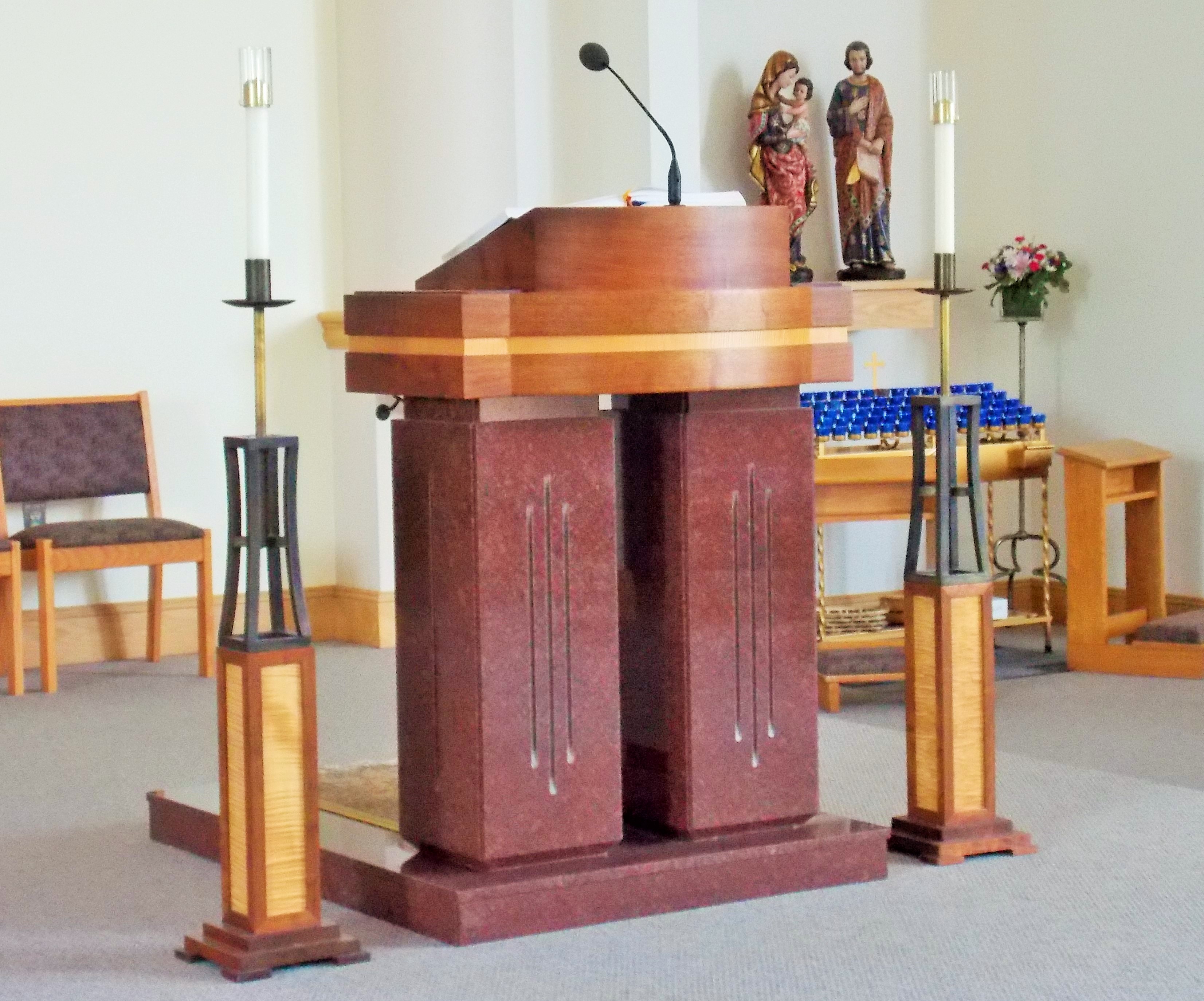Answered by Legionary of Christ Father Edward McNamara, professor of liturgy and dean of theology at the Regina Apostolorum university.
Q: I am in the monastery. There is a grill door that separates our side of the chapel and the sanctuary. We have many frequent friends and benefactors attending our daily conventual Mass. During the Liturgy of the Eucharist, the celebrant is facing the nuns and his back is toward the faithful. My question is, should the ambo on the sanctuary be facing us nuns too? Since we are cloistered nuns, should our lectern be facing the altar/sanctuary too? Our lectern is currently facing the side door, for which I see no point. I would be very appreciated if you can instruct me so that I can inform my superior for any appropriate changes. — M.A., Los Angeles
A: The situation of a cloistered monastery of nuns is a rather special case, and even in this case there is no set solution as it depends on the chapel design.
First of all, let us examine what the General Instruction of the Roman Missal says regarding the ambo:
“309. The dignity of the Word of God requires that in the church there be a suitable place from which it may be proclaimed and toward which the attention of the faithful naturally turns during the Liturgy of the Word.
“It is appropriate that generally, this place be a stationary ambo and not simply a movable lectern. The ambo must be located in keeping with the design of each church in such a way that the ordained ministers and readers may be clearly seen and heard by the faithful.
“From the ambo only the readings, the Responsorial Psalm, and the Easter Proclamation (Exsultet) are to be proclaimed; likewise it may be used for giving the Homily and for announcing the intentions of the Universal Prayer. The dignity of the ambo requires that only a minister of the word should stand at it.
«It is appropriate that before being put into liturgical use a new ambo be blessed according to the rite described in the Roman Ritual.”
To this we may add the indications offered by the U.S. bishops in their document “Built of Living Stones”:
“61. The central focus of the area in which the word of God is proclaimed during the liturgy is the ambo. The design of the ambo and its prominent placement reflects the dignity and nobility of that saving word and draws the attention of those present to the proclamation of the word. Here the Christian community encounters the living Lord in the word of God and prepares itself for the ‘breaking of the bread’ and the mission to live the word that will be proclaimed. An ample area around the ambo is needed to allow a Gospel procession with a full complement of ministers bearing candles and incense. The Introduction to the Lectionary recommends that the design of altar and ambo bear a ‘harmonious and close relationship’ to one another in order to emphasize the close relationship between word and Eucharist. Since many people share in the ministry of the word, the ambo should be accessible to everyone, including those with physical disabilities.
“62. Our reverence for the word of God is expressed not only in an attentive listening to and reflection upon the Scripture but also by the way we handle and treat the Book of the Gospels. The ambo can be designed not only for reading and preaching but also for displaying the open Book of the Gospels or a copy of the Scriptures before and after the liturgical celebration.”
I think there are two principles that would enlighten the situation in this particular case.
First, that the ambo should ideally be fixed. This is because the ambo is a place in the sanctuary and not just a piece of furniture in this precinct.
Second, that it should be placed “in such a way that the ordained ministers and readers may be clearly seen and heard by the faithful.”
In the case described by our reader, it would appear that the ambo is located sideways, so to speak, in such a way that both nuns and any visitors observe the reader in profile. I assume that microphones resolve any problem of being heard.
While not an ideal situation, I believe that, in this particular case, it would appear to be a reasonable solution so that nobody present is listening to a reader while looking at his or her back.
This is important because the readings and the homily are primarily directed toward the people present.
During the Eucharistic Prayer, however, the priest’s position with respect to the people is less important as he is directly addressing God the Father on their behalf as Christ’s minister, rather than talking to the assembly itself.
Also, there are several historical examples of ambos where the reader faces sideways during his service. For example, the Basilica of St. Lawrence in Rome has two historical ambos, one for the epistle and another for the Gospel. In both cases, the place for the readers is set toward the aisle and not facing the assembly.
Finally, not all cloistered convents have this design and this difficulty. For example, in the chapel of the Monastery of the Incarnation in Avila, where St. Teresa first entered religious life, the nun’s grill is at the back so that all face the sanctuary during Mass. In other cases, the place of the sisters is immediately adjacent to the sanctuary.
* * *
Readers may send questions to zenit.liturgy@gmail.com. Please put the word «Liturgy» in the subject field. The text should include your initials, your city and your state, province or country. Father McNamara can only answer a small selection of the great number of questions that arrive.



